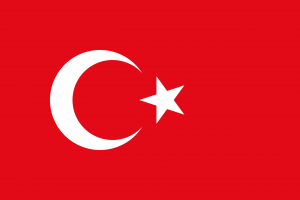Difference between revisions of "Language/Turkish/Vocabulary/Asking-for-Directions"
m (Quick edit) |
m (Quick edit) |
||
| Line 7: | Line 7: | ||
Asking for directions is an important part of travelling, especially when you're in a foreign country. In this lesson, I will teach you some Turkish phrases and vocabulary that will help you ask for directions in Turkey. By the end of this lesson, students will be able to confidently navigate their way through Turkish streets. | Asking for directions is an important part of travelling, especially when you're in a foreign country. In this lesson, I will teach you some Turkish phrases and vocabulary that will help you ask for directions in Turkey. By the end of this lesson, students will be able to confidently navigate their way through Turkish streets. | ||
<span link>Take a moment to explore these relevant pages as you conclude this lesson: [[Language/Turkish/Vocabulary/Math-Symbols|Math Symbols]] & [[Language/Turkish/Vocabulary/Compliments|Compliments]].</span> | |||
== Turkish Vocabulary == | == Turkish Vocabulary == | ||
| Line 64: | Line 66: | ||
B: "Right in front of you, on the left side. You'll see it." | B: "Right in front of you, on the left side. You'll see it." | ||
A: "Thank you!" | A: "Thank you!" | ||
<span class='maj'></span> | <span class='maj'></span> | ||
| Line 84: | Line 85: | ||
[[Category:0-to-A1-Course]] | [[Category:0-to-A1-Course]] | ||
[[Category:Turkish-0-to-A1-Course]] | [[Category:Turkish-0-to-A1-Course]] | ||
==Videos== | ==Videos== | ||
| Line 92: | Line 91: | ||
<youtube>https://www.youtube.com/watch?v=9puEfbMPG68</youtube> | <youtube>https://www.youtube.com/watch?v=9puEfbMPG68</youtube> | ||
==Other Lessons== | |||
== | |||
* [[Language/Turkish/Vocabulary/Economics|Economics]] | * [[Language/Turkish/Vocabulary/Economics|Economics]] | ||
* [[Language/Turkish/Vocabulary/Expressing-opinions|Expressing opinions]] | * [[Language/Turkish/Vocabulary/Expressing-opinions|Expressing opinions]] | ||
| Line 106: | Line 104: | ||
{{Turkish-Page-Bottom}} | {{Turkish-Page-Bottom}} | ||
<span links></span> | |||
Revision as of 22:25, 27 March 2023
Asking for directions is an important part of travelling, especially when you're in a foreign country. In this lesson, I will teach you some Turkish phrases and vocabulary that will help you ask for directions in Turkey. By the end of this lesson, students will be able to confidently navigate their way through Turkish streets.
Take a moment to explore these relevant pages as you conclude this lesson: Math Symbols & Compliments.
Turkish Vocabulary
Before we get into the phrases, let's learn some Turkish words that you might encounter when asking for directions.
- Sokak: Street
- Cadde: Avenue
- Meydan: Square
- Köprü: Bridge
- Sağ: Right
- Sol: Left
- İleri: Straight
- Geri: Back
Phrases
Now that we have a basic understanding of the important vocabulary, let's look at some useful phrases.
- "Nerede?" - "Where is it?"
- "Bana en yakın ... nerede?" - "Where is the nearest ...?"
- "Buradan [sokak/cadde] nerede?" - "Where is [street/avenue] from here?"
- "Sağa/Sola/İleri/Geri git" - "Go right/left/straight/back"
- "Tam karşıda" - "Right in front of you"
- "Solda/Sağda" - "On the left/on the right"
Here are some examples of how these phrases can be used in conversation:
- "Excuse me, where is the nearest bank?"
- "Pardon, bana en yakın banka nerede?"
- "Where is the Blue Mosque?"
- "Mavi Camii nerede?"
- "How can I get to Taksim Square?"
- "Taksim Meydanı'na nasıl gidebilirim?"
To ask for directions more politely, you can add "Lütfen" (which means "please" in English) at the beginning of the sentence.
- "Lütfen, Mısır Çarşısı nerede?" - "Excuse me, where is the Spice Bazaar?"
Cultural Information
In Turkey, people are generally quite helpful and friendly when it comes to giving directions. However, it's important to note that street names and numbers can be a bit confusing in some areas, especially in older neighborhoods. It's also common to use landmarks (such as mosques or fountains) as reference points instead of specific addresses.
One thing you might notice when asking for directions in Turkey is that people often use their hands to point you in the right direction instead of using words. This is especially true in crowded or noisy areas, where it might be difficult to hear what someone is saying.
Practice
To practice your Turkish skills, try asking for directions next time you're out exploring. It might seem intimidating at first, but with a bit of practice, you'll feel more confident navigating your way around the city. Remember to be polite, and don't be afraid to ask for clarification if you don't understand something.
Here's an example conversation to help you get started:
A: "Merhaba, İstanbul Modern nerede?" B: "Tam karşıda, sol tarafta. Göreceksiniz." A: "Teşekkür ederim!"
Translation: A: "Hello, where is Istanbul Modern?" B: "Right in front of you, on the left side. You'll see it." A: "Thank you!"
Sources
- Learn How to Ask for and Understand Directions in Turkish
- Turkish lessons: Directions
- Turkish/Asking for directions - Wikibooks, open books for an open ...
Videos
Finding an address and asking for directions in Turkish (Türkçe ...
Other Lessons
- Economics
- Expressing opinions
- Adjectives
- Bird
- HOW MANY
- Supermarket
- Halloween
- Animal Sounds
- Art
- Free Time Activities
